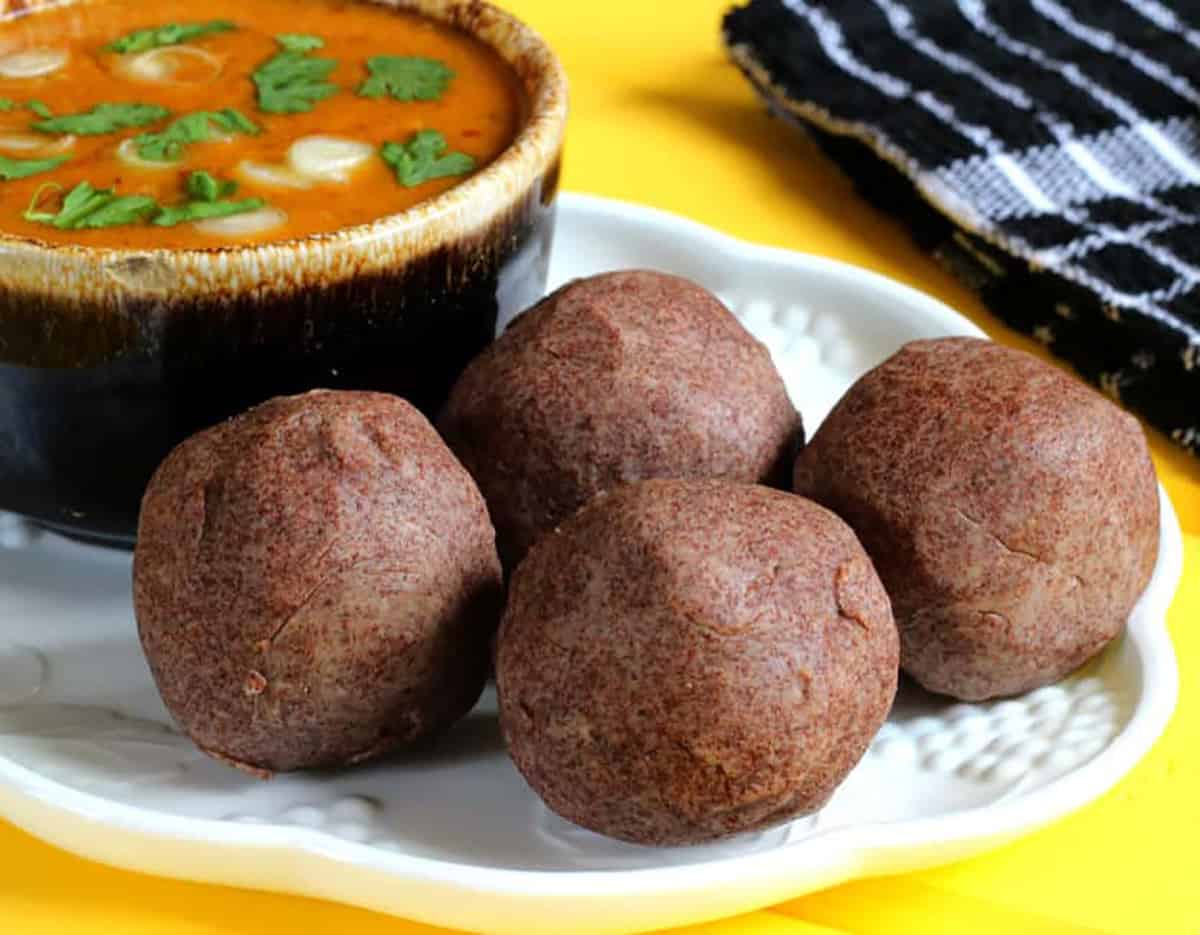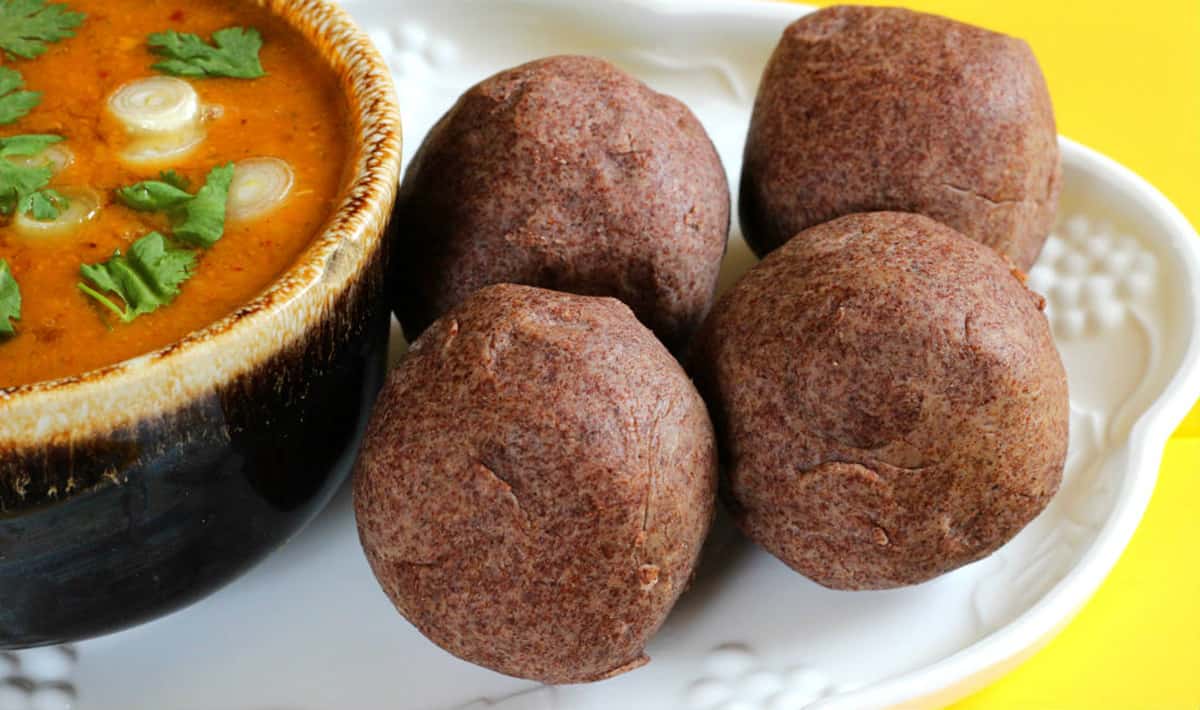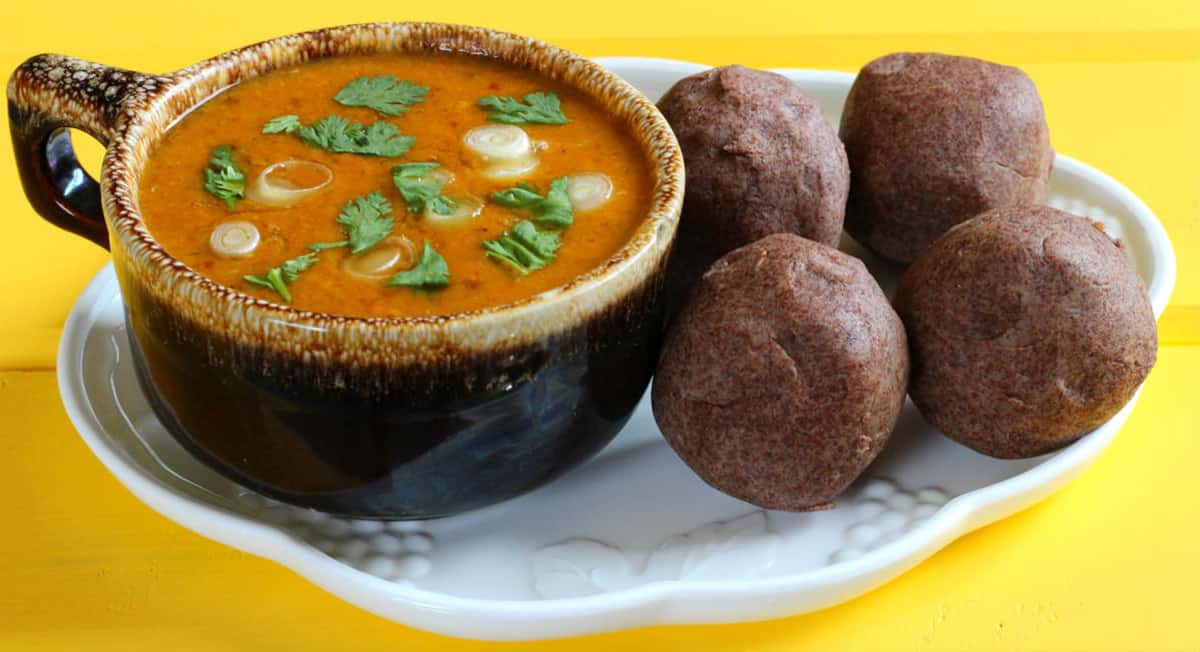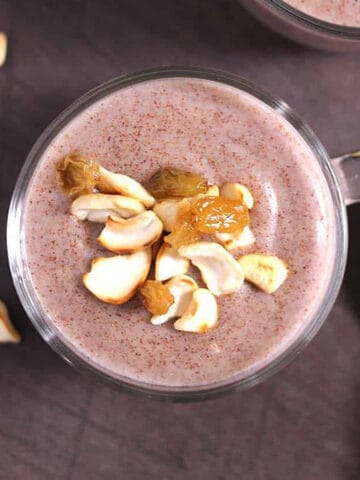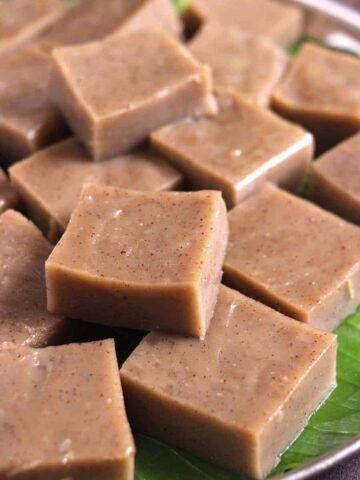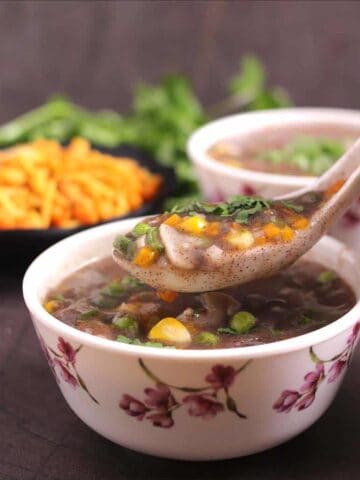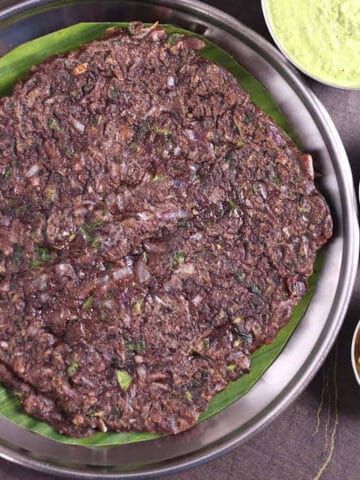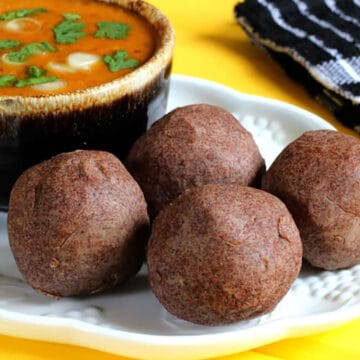Why you’ll love this recipe
Ragi is the best superfood and wonder grain for weight loss that you can add to your diet. Also, check out the easy ragi dosa recipe, ragi rotti (ragi roti), ragi malt, and very popular ragi custard or manni.
Ingredients
Ragi flour: Ragi flour or sprouted finger millet flour is the key ingredient to making these mudde or balls. Use any good quality brand of your choice. Water: Water is used to make mudde (lump). The amount of water you may require will vary based on the flour quality and weather conditions. Salt and Ghee: Salt and ghee are totally optional. I add both for flavors. Some people skip salt because you serve it with gravies or curry, which already has salt. See the recipe card below for a full list of ingredients and measurements.
Variations
Ragi Sangati and Ragi Kali are other variations where rice flour or cooked rice is added. But note that the Karnataka-style ragi mudde is traditionally made only using ragi flour.
Step-by-step instructions
Step 1: Add water, salt, and ½ tablespoon of butter or ghee to a nonstick pan and bring it to a nice boil.Step 2: Now add the ragi flour little by little and keep stirring it continuously, first using a whisk and then a thick wooden spoon till the mixture becomes soft and smooth. That is, until you see no dry powder or any lumps and get one nice ball out of it.Step 3: Cover with the lid and cook on low flame for about 5 minutes.Step 4: Mix this and cover it with the lid. Switch off the flame and let it continue to steam in the residual heat for 5 minutes.Step 5: Now divide this mixture into four equal portions. Apply some butter or ghee on your palm and make balls out of it. To get a softball, it is better if you make it when it’s hot. But if you find it difficult to handle, wait for some time.
Tips
If you do not have a wooden spoon (mudde kolu), use the back end of the laddle to stir it. See that the ragi is cooked properly; else, you may have stomach upset. To know if our ragi mudde is perfectly done, touch the final mixture with your fingers or use a spoon. The mixture should be nonsticky. If the dough mixture is sticky, it means the mixture is not cooked perfectly. I prefer using a nonstick pan so that it is easy to handle. You can also avoid it from burning at the bottom. The amount of water I used was perfect for the flour and weather conditions here. If the mixture looks too sticky, wet, mushy, or soggy at the last stage, add 1 tablespoon of extra flour. But if you feel the final mixture is too dry, then add an extra tablespoon of hot water.
How to eat Ragi Mudde?
Ragi mudde is not to be chewed. You have to swallow them. So on a serving plate, first place the ragi mudde and top it off with sambar or bassaru, or chutney. Break them into small pieces and enjoy.
Serving suggestions
Ragi mudde and bassaru or upsaaru is a very popularly served combination. You can also serve mudde or sangati with spicy chicken curry, massoppu, south Indian sambar, spicy chutney, dal, mutton curry, fish curry, or any dal gravy made using greens. Want a simple meal? You can even combine it with yogurt or buttermilk or curds.
Storage instructions
Ragi mudde tastes best when made fresh and served hot. It is one of the quick recipes you can make. But if there are leftovers, you can keep them at room temperature for 3 to 4 hours or in the refrigerator for up to one day. You can reheat it in a microwave or stovetop until heated through by splashing some water.
More Ragi Recipes to love
Did you like this recipe? Please leave a star ⭐️⭐️⭐️⭐️⭐️ rating below and/or a review in the comments section. You can also stay in touch with us through social media by following us on Pinterest, Facebook, Instagram, and Twitter.
Recipe card
